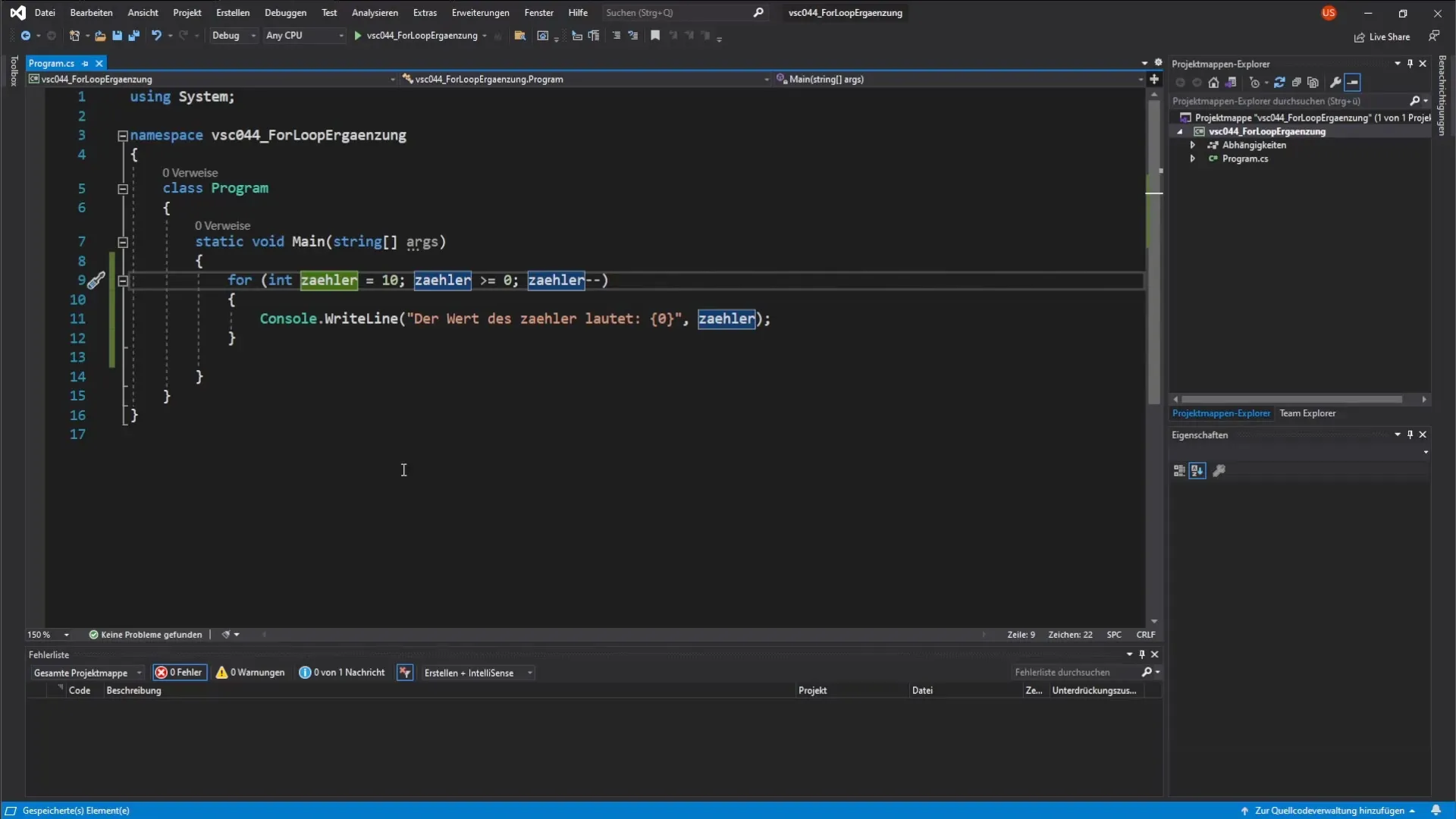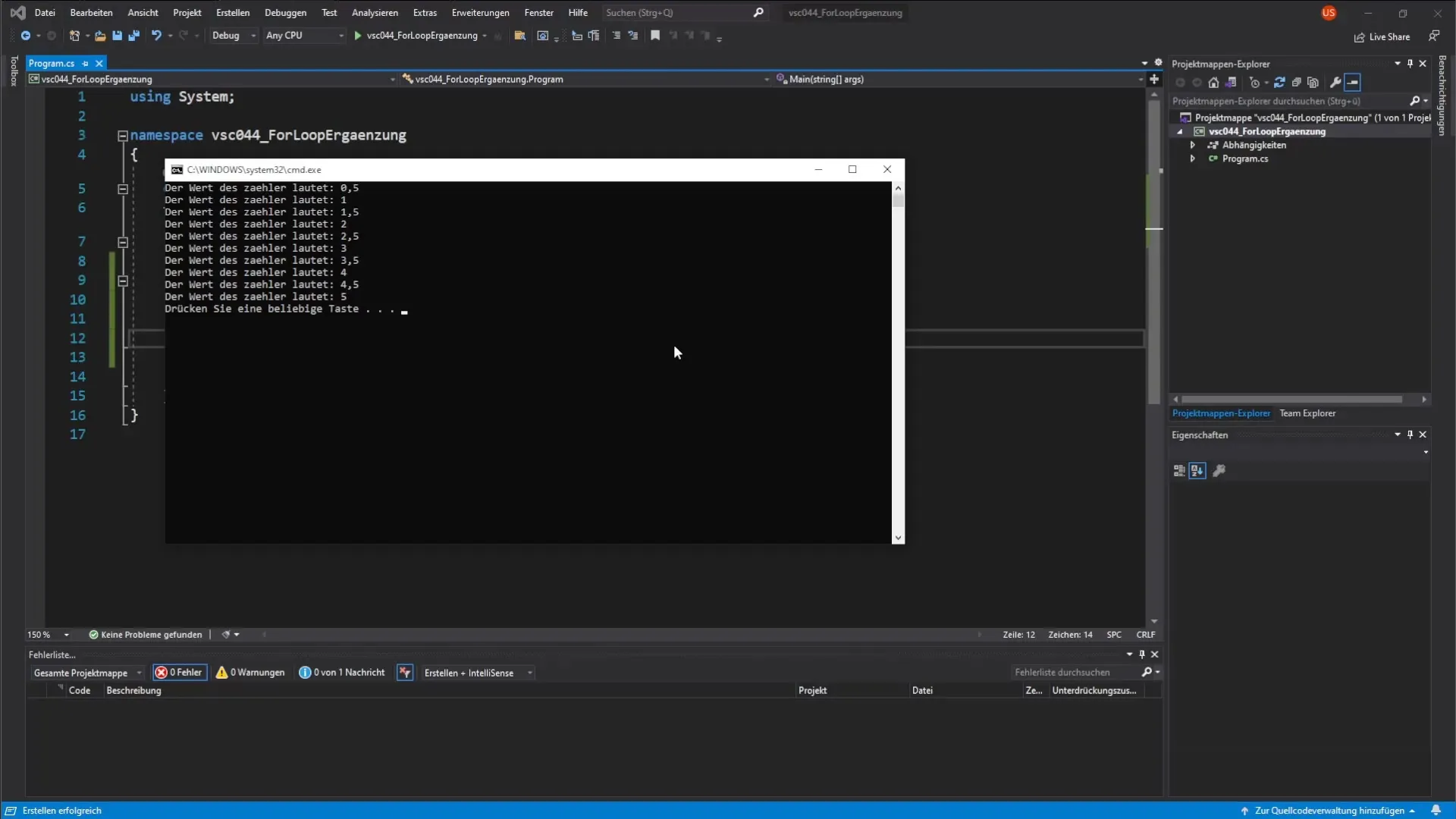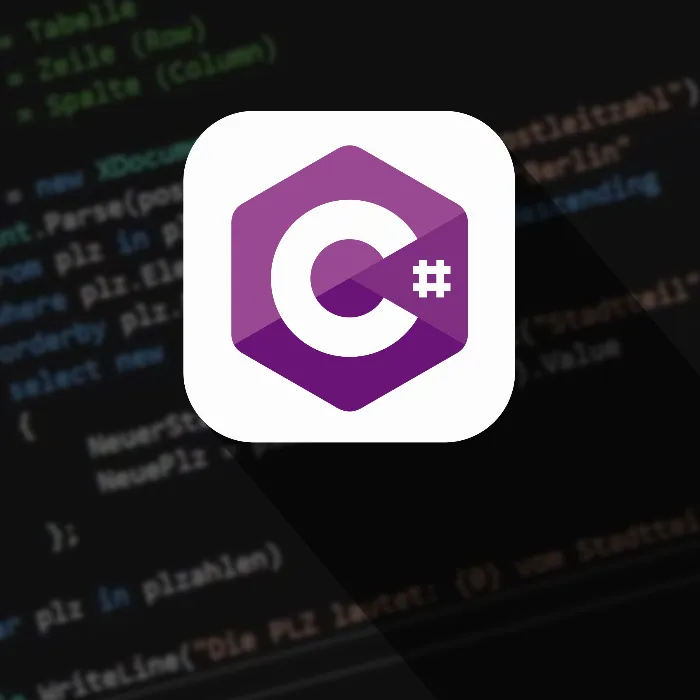In object-oriented programming with C#, there are many ways to perform iterations. One of the most common is the for-loop. While many tutorials often only cover the use of an integer variable, I want to make it clear in this text guide how effective a for-loop can be with a double-variable. Understanding the different data types is crucial for developing flexible and precise software.
Key Insights
- The for-loop can also work with double variables, not just with integer variables.
- The use of double variables allows for more precise increments, such as in half steps.
- To use correct values, you must use the English point instead of the German comma when using decimal numbers.
Step-by-Step Guide
To implement a for-loop with a double variable, there are some important steps you need to follow. First, you define the counter, then set the loop conditions, and finally implement the increment.
1. Declaration of the Counter Variable
Start by declaring the counter variable as double. This is done using the keyword double. This allows you to use values with decimals, which increases flexibility in many applications.

2. Initialization of the Counter Variable
Set the initial value of your counter variable to 0.5. Make sure to use a point instead of the German comma since you are working in an English IDE. This attention to detail prevents possible errors in the code.
3. Setting the Loop Conditions
Define the conditions under which the loop will execute. In this case, the loop should continue as long as the counter is less than or equal to 5. This ensures that the loop only counts up to a certain value and then stops.
4. Incrementing the Counter
Now implement the increment inside the loop. You add += 0.5 to increase the counter by 0.5 in each iteration of the loop. This allows for fine-grained counting, which is useful in applications involving mathematical calculations.
5. Running the Program
Start your program to see how the loop works. You should be able to observe that the counter increases by 0.5 with each iteration until it reaches the value of 5. This ability to work with double variables greatly expands your possibilities in programming.

6. Conclusion on Using Double in For-Loops
It is important to note that using a double variable in a for-loop is a rarely mentioned method. By defining counters as double, you achieve greater precision in your calculations and can increase the flexibility of your software applications.
Summary – C# Programming: For-Loop with Double Variable
In this guide, you have learned how to implement a for-loop in C# with a double variable. You have learned the steps from declaration to initialization to execution. With this knowledge, you can make your loops more efficient and get more out of the possibilities of programming.
Frequently Asked Questions
What is a for-loop?A for-loop is a control structure in C# that allows you to execute a specific block of code multiple times.
Can I also use double variables in a for-loop?Yes, you can declare counters as double in a for-loop, which provides more flexibility.
How is a double variable declared in C#?A double variable is declared in C# with the keyword double followed by the variable name.
Why do I have to use points instead of commas in an English IDE?In English IDEs, the decimal separator is a point, not a comma as in German.
What are the advantages of using double over integer?The use of double variables allows for more precise increments and greater flexibility in mathematical calculations.


